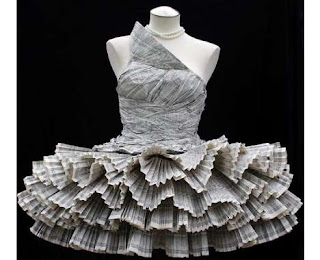Combining cardboard, fabric, cut, image and fold....
I've been doing lots of research recently and amongst it all
I have come across some amazing paper makers.
 |
| Noriko Ambe is Incredible! |
 |
| Just look at these beautifully hand crafted sculptures! |
 |
This book is a must! Get hold of it here
|
 |
| Claire Brewster uses lovely old maps |
 |
| and of course there is Jennifer Collier using this too! |
 |
| Mia Pearlman creates large scale sculptures |
 |
| and lovely glassware too! |
 |
| Mister Charlesworth for some heritage inspired craft |
 |
| and Kate Farley for some lovely print and fold work |
 |
| This Mafoombey acoustic space is just brilliant! |
 |
| Romain Lenancker uses origami in his photos |
 |
| I like the playfullness in this one too |
Go here for more cardboard inspired designs too!
 |
| Thinking back to book art the work of Thomas Allen is very playful |
 |
| sometimes it really is the simplicity which works so well |
 |
| Su Blackwell plays with the idea of storytelling and fairytales |
And in Fashion....
 |
| Ever needed 35 Ways to wear paper?!
This paper dress by Jolis Paons is there... |
 |
| ...check out Violise Lunn too |
 |
| I like the idea with this origami clutch bag, |
 |
| and I REALLY love this! |
 |
| and seriously?! WOW WOW WOW!!
Check out the collection at Mashallah Design! |
I'm hoping all of this will influence my designs for this next project:
Context:
The
use of digital technology offers huge potential to those working in the
decorative arts.
From
research and development to
visualization and production digital technology can not only stream line
production but also offers a huge range of new exciting techniques and
processes to produce both 2D and 3D work.
You
will be working on two project designed to equip you with the skills to develop
work using a combination of 'the digital' and 'the hand'
As
well as using software we will explore a whole variety of means that work can
leave the screen and become 'real' using:
·
Laser cutting
·
Water jet cutting.
·
Digital embroidery.
·
Vinyl transfers/ sand blasting
·
CNC
·
3D Printing.
Brief
1:
From
2D to 3D
Working
from a combination of images, drawings, pattern research (you may wish to
develop your work from colour/print projects). We will be developing a series
of 'Vector' images/patterns/plans using illustrator and 2-design applications.
You
will explore the output of these 'Vectors' a variety of methods:
·
Printing/Plotting
·
Vinyl Cutting.
·
Laser Cutting.
·
Water Jet Cutting.
·
CNC.
You
are now required to develop this two dimensional work into three dimensional
outcomes using appropriate material techniques and processes.
Consider:
·
Hand cutting.
·
Machine cutting.
·
sand blasting
·
Folding/twisting/bending/melting/slotting
etc.
Brief
2:
3D
modeling and rendering
Working
from a 'real object' you have produced during the year. We will be using
rhinoceros to create a digital 3D model of this object.
Initially
you will explore the potential of 3D digital modeling to produce virtual three
dimensional forms and structure.
You
will then produce a model of your chosen object and apply appropriate digital
materials to it for visualization purposes. You may also experiment with
digital 3D printing and production techniques:
·
3D printing
·
CNC
Finally
you will 'render' your finished model and composite it into a variety of
contexts which may the develop the objects meaning/aesthetic/function.
So to start all this off we've been asked to:
· Cutting up hand drawn or digital Patterns and folding.
· Layering cut out patterns to form structure.
· Slotting weaving bending twisting.
· Reforming your Easter eggs boxes to new and exciting object.
watch this space!


No comments:
Post a Comment